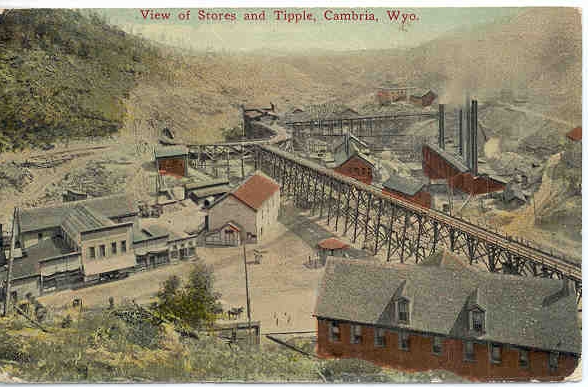
Cambria, Wyoming, 1916
Cambria, Wyoming, northwest of Newcastle, was established in 1887 as a company
owned coal mine by the Cambria Fuel Company, a subsidiary of Kilpatrick Brothers and Collins, contractors to the Chicago,
Burlington & Quincy Railroad. Construction of the railroad had come to a halt near Alliance, Nebraska, due to the
high cost of providing eastern coal for the locomotives. With the discovery of a reliable
source of coal in Little Oil Creek Canyon renamed Cambria Canyon, railroad construction was able to resume with a spur line
reaching the canyon in 1889. In June of 1889, patents for initial properties were issued to
Joseph M Kilpatrick and Robert J. Kilpatrick.
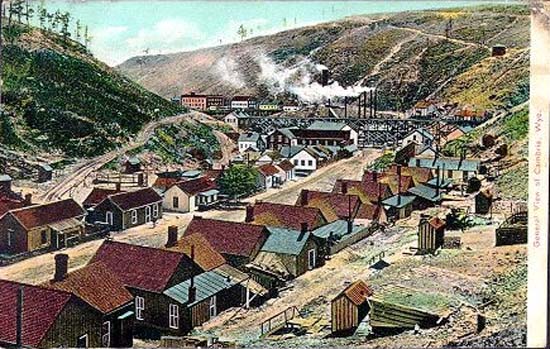
View Down Canyon, 1908
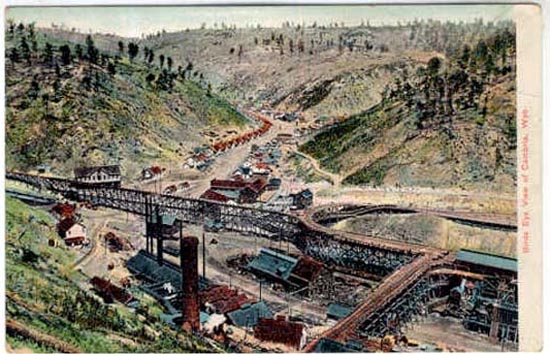
View Up Canyon, 1908
By 1895, the population had grown to 329 and by 1904 a population
of approximately 1400. At
its height the town had more than 150 houses, two churches (depicted on the next page), three fraternal orders
(Improved Order of Redmen, Odd Fellows, and Knights of Pythias),
a two story hotel, pictured below, an opera house, a concert band,
and a large commissary at which Company script could be used.
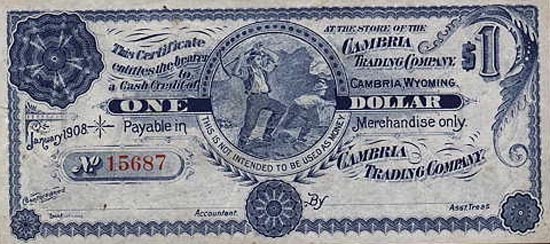
Cambria Trading Company Script
In addition to script, smaller denominations would be issued by the company in the form of
"coins" known as "clacker," so called from the sound that the cheap coins made. Coal companies, in addition to charging
higher prices at the commissary, made money when the script was used at a non-company store by
redeeming only at a discount.
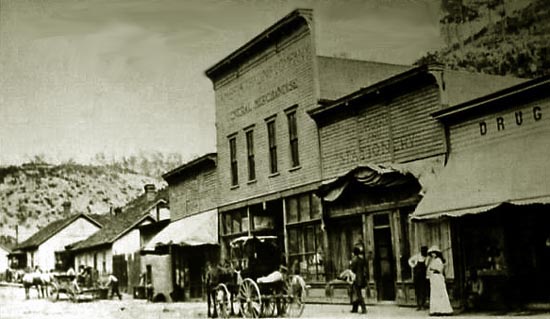
Billy Miller delivering milk from wagon. Miller was later elected as
sheriff of Weston County and was killed at the "Battle of
Lightning Creek" in 1903.
The company converted the coal to coke itself, using
74 separate ovens. An electric system was installed, powered by 1,800 hp. steam engines. The
fireboxes for the boilers were emptied by an electrically powered conveyor
system. Thus, the boilers could be operated by only one employee. Water for the town came from a 2,345 deep well which used
compressed air to raise the water. Horses, mules, and other provisions were supplied by
a Kilpatrick Brothers & Collins owned ranch.
By 1904, the mine employed over 500 men. An initial condition of employment was the employees would
apply for homestead on lands adjacent to Company owned properties and upon the
patent being issued, convey the property to the Company. As discussed with regard to
Diamondville, this was probably illegal, but apparently nothing
was done by the government.
As a Company owned town, there were no saloons, dance halls or other places of
resort for lonely miners. This probably also contributed to the growth of
Newcastle which had such attractions.
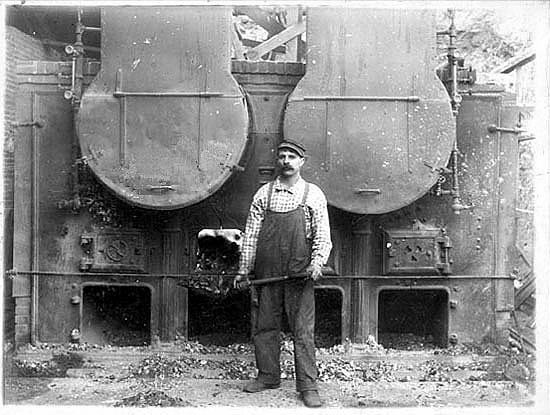
Cambria, Boilers, approx. 1890, photo by
A. F. Trone.
Abraham F. Trone was a Sheridan photographer. Later he moved to Big Horn County.
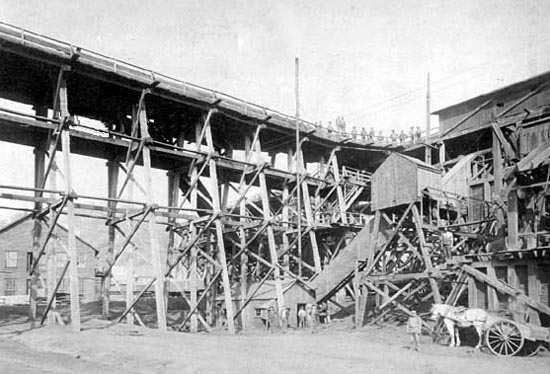
Cambria Tipple, undated.
Next Page: Cambria continued
|